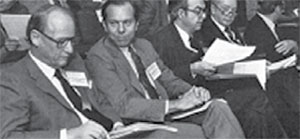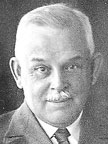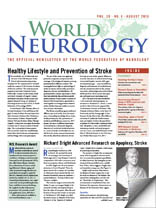“Vienna’s culture was one of extraordinary power, and it had been created and nourished in good part by Jews. My life has been profoundly shaped by the collapse of Viennese culture in 1938. … The sense of loss is heightened by the fact that Vienna was my birthplace, my home.”
– Eric Kandel, In Search of Memory (2007)

Frank W. Stahnisch, MD, MSc (Courtesy of the University of Calgary)
If one looks at cultural influences on modern brain research from a historical perspective, it is useful to take into account the ground-breaking developments in 20th century clinical neuroscience that emerged through the forced migration of German-speaking neurologists, neuropathologists and neurosurgeons after the rise of Nazism and Fascism in Central Europe. Following the massive expulsion of Jewish and politically opposed neuroscientists from the German-speaking countries to North America after 1933 (a development that saw approximately 600 researchers and physicians with neurological training and scientific experience driven into exile), the various relationships between neurology, psychiatry, pathology and experimental psychology underwent gradual readjustment.
The effect this process had on the pre-existing research cultures in the U.S. and Canada was the rapid transformation of the brain research field into one of the most prolific areas of biomedical knowledge production. The founding of the National Institutes of Health in 1948 and particularly the research conducted by the National Institutes of Mental Health and the National Institute of Neurological Diseases and Blindness in Bethesda, Md., since the 1950s were landmark events that mark this transformation phase in the formation of early neuroscience. This was a period when many émigré doctors and neuroscientists became relicensed and intended to resume their work in clinical care in North American postwar neuroscience institutions.

Eric Kandel (left) at a medical conference at the NIMH in Bethesda, MD, circa 1965. (Courtesy NIH)
Stahnisch currently conducts a historical research project … that aims to document and analyze the impact of the forced migration of German-speaking neuroscientists.
Often whole research schools were expelled under the Nazi and Fascist governments: An illustrative example of this is the group of academic disciples and coworkers of the director of the clinical department of psychiatry at the Charité in Berlin, Karl Bonhoeffer (1868-1948). Nearly one third of his longtime research associates had to seek refuge in North America. This illustrious group of psychiatrists and neurologists included Paul B. Jossmann (1891-1978) who went to the Veterans Administration Outpatient Clinic in Boston; Lothar Bruno Kalinowsky (1899-1992) who shifted his work to the Mount Sinai Hospital in New York City; Franz Joseph Kallmann (1897-1965) who led the Genetics Laboratory of the New York State Psychiatric Institute between 1938 and 1961; Fred Quadfasel (1902-1981) who worked at the Hospital of the Veterans Administration in Boston; Herta Seidemann (1900-1984) who likewise went to New York City, where she assumed the post of a staff attending physician at Montefiore Hospital in Brooklyn, and Erwin W. M. Strauss (1891-1971) who was the only physician from the former Berlin group to settle in the traditionally southern state of Kentucky.

Karl Bonhoeffer, 1938
Stahnisch currently conducts a historical research project — funded by the Canadian Institutes of Health Research (CIHR) — that aims to document and analyze the impact of the forced migration of German-speaking neuroscientists to Canada and the United States after the 1930s and 1940s, while specifically focusing on theoretical concepts and scientific applications of interdisciplinarity in 20th-century neuroscientific research. The aims of the research project are: first, to describe the general research topic; second, to show how a new model can be applied to historiography and social studies of neuroscience; third, to provide a deeper understanding of the influence of Central-European émigré-researchers on the emerging field of neuroscience after WWII.
With this article, Stahnisch seeks assistance from the international community of neurologists regarding existing archival collections, personal papers and diaries, along with personal accounts by former colleagues, pupils and family members, in order to gain information about German-speaking émigré neuroscientists in North America.
For a preliminary article on the scope and depth of the research project, see: OEZG. 2010;21:36-68 (www.univie.ac.at/oezg/OeZG103.html#A2).
Stahnisch is a medical historian at the University of Calgary, Alberta, Canada. Visit the history of medicine and health care program at homhcp.ucalgary.ca.
